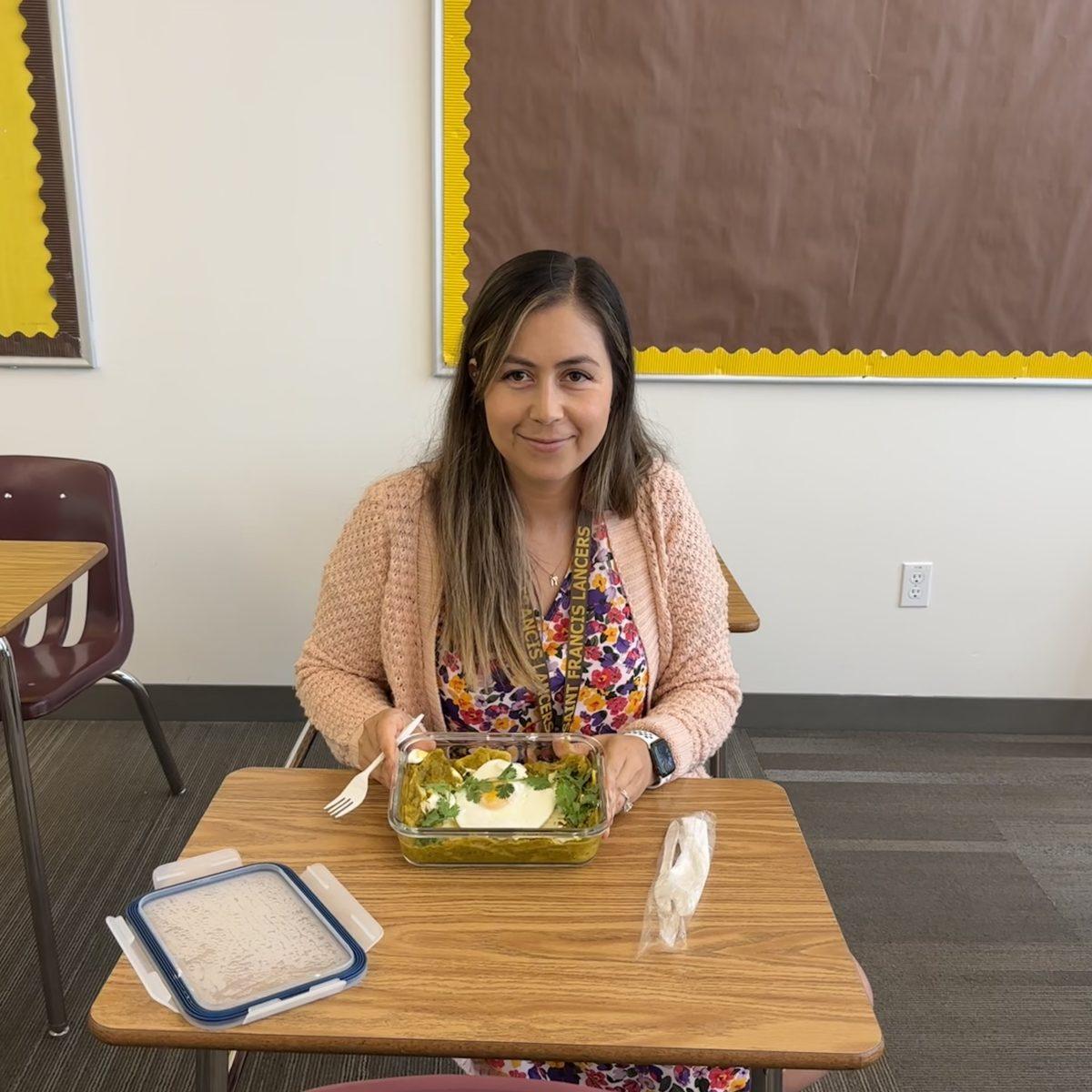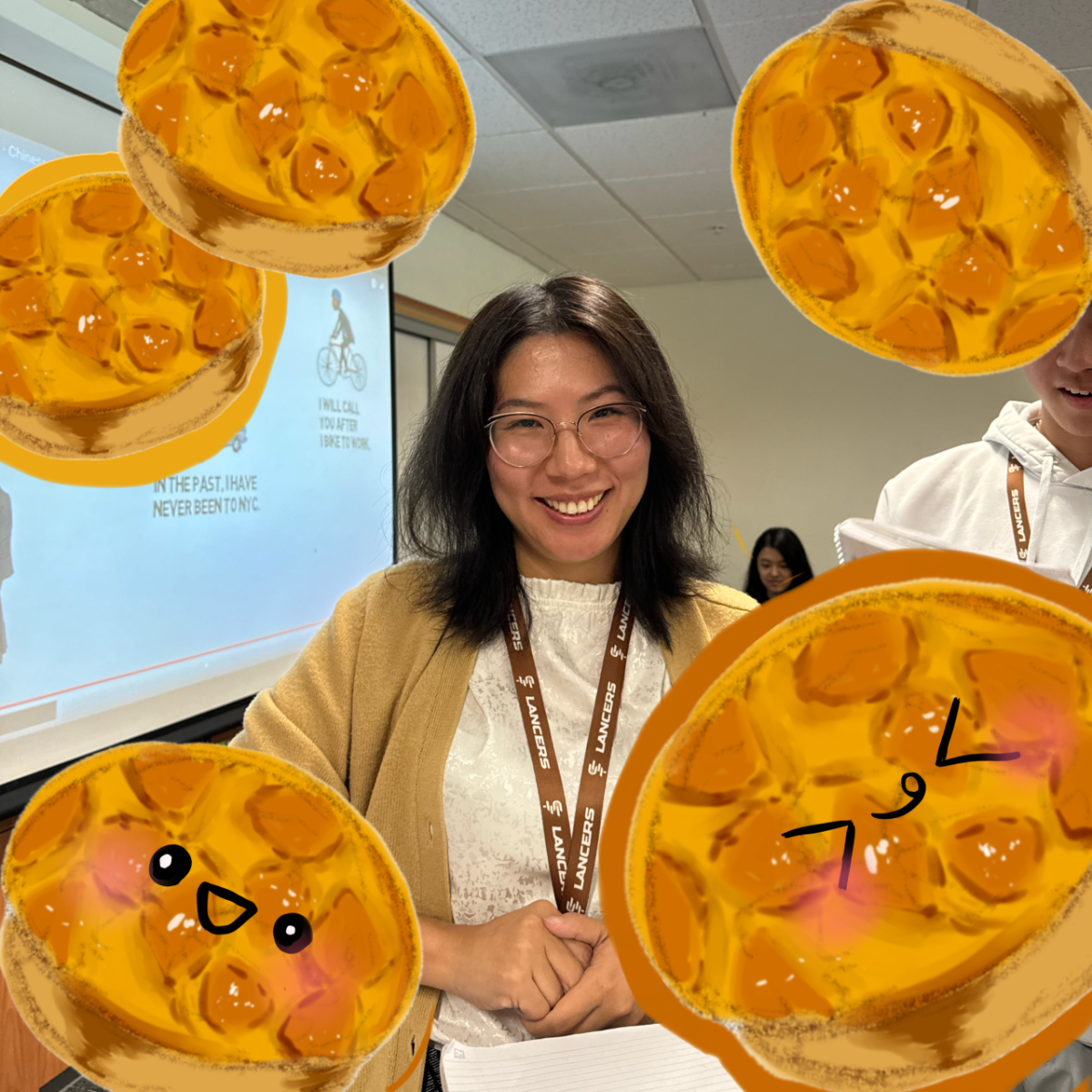During homeroom, Profe Brittain often talks about her love for watching Food Network shows like Halloween Baking Championship with her son, so she already had some experience watching judges critique contestants’ dishes, making her the perfect food critic for my first column. After agreeing to participate, Profe said chilaquiles verdes were her favorite dish. In fact, Profe had just come back from a trip to San Diego, where she said she had the best chilaquiles she had ever tasted. The pressure was on.
Before finding a recipe, I wanted to learn more about the history of chilaquiles. Chilaquiles verdes is a traditional Mexican dish, consisting of tortilla chips covered in a salsa verde. Chilaquiles are usually topped with cotija cheese, crema, onions, and a fried egg. The concept behind the dish, corn tortillas in chile salsa, dates back to the Aztec Empire; according to Mexican historian Ángel María Garibay, the name “chilaquiles” came from the Nahuatl word chilaquili, meaning “submerged in chiles.” The dish was first popularized in the US in 1898 by Encarnación Pinedo, in her cookbook El Cocinero Español. Nowadays, chilaquiles are a clever way to repurpose stale tortillas into a delicious breakfast or lunch.
Before recreating the recipe, I decided to consult an expert I knew personally. Mayrén Sánchez, a friend of my mother, prides herself on her ability to make a delicious variety of salsas. Based on her experience, she told me that “often, when making salsa verde, tomatillos are too sour and can become bitter when cooked.” Ms. Sánchez suggested adding part of a red tomato to counteract the sour or bitter taste.
Eager to use my newfound knowledge, I found a recipe for salsa verde. The recipe called for tomatillos, poblano peppers, serrano peppers, onions, garlic, cilantro, and chicken broth. I had never cooked with tomatillos before, so I was surprised to see that tomatillos have a thin, leaf-like covering that encapsulates the fruit. Soon, I learned that I was not the only one who did not know this; in the checkout lane, the cashier asked me about these “huge brussel sprouts.” Having prepared all of the necessary ingredients, I let the tomatillos, onions, and two large tomatoes roast in the oven until they had visibly softened and waited for the poblanos and serranos to have a slight char on top. Once the tomatillos, onions, and peppers were roasted, I put them in the blender until the mixture reached the desired thickness and added the cilantro, chicken broth, and salt. This is where I ran into my first problem. I took a spoonful to taste test and found the salsa to be quite sour and almost lemony. I decided to incorporate the roasted tomatoes—little by little—tasting to see if the sour flavor had changed. In the end, the salsa verde ended up with a slightly sweet undertone, but the spice from the serranos delivered what Profe later described to be a “slow-release kick.”
The next step of making chilaquiles is to boil down the salsa verde and stir in the tortilla chips. I did not have enough old tortillas to fry or bake my own tortilla chips, so I resorted to a local Bay Area favorite: Casa Sanchez chips. After making sure the chips were well coated, I poured the mixture into a container, drizzling small amounts of sour cream, shredded cheese, a fried sunny side up egg, and fresh sprigs of cilantro for presentation.
I met with Profe for the last ten minutes of lunch so she could taste the final product. After she took the first bite, she paused. I thought she was going to say something about the spice level or the number of toppings; little did I know, she was channeling her inner Chopped judge and creating dramatic emphasis. Profe said that she thought the chilaquiles were very flavorful and the spice level was perfect. She also provided me with helpful feedback so that I could improve next time. First, she suggested that I add more salt to balance out the subtle sweetness. Second, one of the most trademark characteristics of chilaquiles is the varied texture between the salsa, the still slightly crunchy chips, and the egg yolk and cheese. Because of this, Profe mentioned that it would be better to eat the dish right after it was made, though she was understanding of the fact that I could not realistically prepare the chilaquiles right before lunch period. Reflecting on the reason why this is her favorite dish, Profe said, “Chilaquiles have limited ingredients, making them an easier dish to make.” Overall, I recommend chilaquiles verdes to anyone looking for a creative and convenient way to use leftovers.










































































